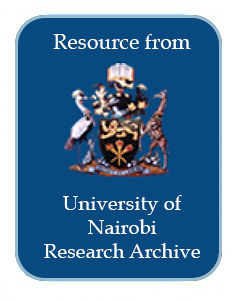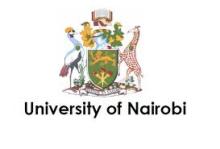Resource information
The Thika Superhighway is perhaps the most massive infrastructural project in the East African region, save for perhaps the standard gauge railway (SGR) project. It was anticipated by the business community, leading to the change of use of land along it, manifested in the development of malls and housing estates. This land use change is continuing despite the road having been completed in February of the year 2012. The road was built with the aim of easing the traffic congestion problem, but traffic congestion persists. This phenomenon has not been documented in this part of the world and the study aims at doing so.
A study area was isolated along the Thika Superhighway which had a variety of land uses. An examination was done on the nature of the superhighway itself, the predominant land use in this area, the nature of the land use changes and the effect of this on traffic along the highway. This was done with a view to establishing a link between adjacent land use changes and traffic along the superhighway.
Results from the study indicate that there is a relationship between adjacent land use change and traffic on the highway. This was evidenced from changes in the design of the highway at some friction points where land use change had occurred and had had an impact on the traffic flow. As well, the desire for most of the respondents to own private vehicles would tend to have the effect of increasing traffic along the highway from a planning point of view.
The conclusions drawn from the study therefore point to a need to have a reliable transport system to bring down the numbers of private vehicles on the roads thus congestion. As well, it is incumbent upon transport and planning authorities to come up with means of performing conclusive studies on the impact of certain developments to roadways and thus mitigate these impacts early on in development.


